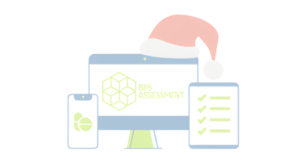If you’re preparing for the Prescribing Safety Assessment, you’ll want to know exactly what’s in the exam. So in this blog post we look at the detailed structure of the PSA exam, to help you get exam-ready.
Structure of the PSA
The PSA exam is 2 hours long and is scored out of 200 marks. It consists of 60 question items in total, broken down into 8 sections:
- Prescribing (PWS) with 8 question items worth 10 marks each
- Prescription Review (REV) with 8 question items worth 4 marks each
- Planning Management (MAN) with 8 question items worth 2 marks each
- Providing Information (COM) with 6 question items worth 2 marks each
- Calculation Skills (CAL) with 8 question items worth 2 marks each
- Adverse Drug Reactions (ADR) with 8 question items worth 2 marks each
- Drug Monitoring (TDM) with 8 question items worth 2 marks each
- Data Interpretation (DAT) with 6 question items worth 2 marks each
Each section is designed to test one of the prescribing competencies expected of a Foundation Year 1 doctor (as outlined in Outcomes for graduates). So what can you expect from each section? Let’s take a closer look.
Section 1: Prescribing (PWS)
The purpose of this section is to demonstrate your ability to write a safe and effective prescription, to manage acute medical emergencies, and to plan appropriate drug therapy for common indications.
For each question item, you’ll be given a clinical scenario followed by a request to prescribe a single appropriate medicine or intravenous fluid, using one of a variety of prescription forms.
Typical scenarios involve the treatment of acute conditions (e.g. acute asthma attack, acute heart failure), chronic conditions (e.g. depression, reflux oesophagitis), and important symptoms such as pain.
You’ll need to decide between different drugs, formulations, routes, doses and dose intervals. You’ll be expected to write an unambiguous and complete prescription (approved name of drug, appropriate form, correct dose and route).
Your answer can be selected from the responsive fields available on the prescription form. You’ll need to begin by typing your answer into the field – this will trigger a drop-down menu from which you can select your answer.
Section 2: Prescription Review (REV)
The purpose of this section is to demonstrate your ability to review the prescribing of others, to spot potentially important errors and to make changes that will improve patient outcomes.
In this section, you’ll be given scenarios that require you to review a current list of prescribed medicines (such as an inpatient prescription chart or a referral letter from a GP). You’ll have 6-10 medicines to review for each question item.
Usually, this means interpreting the list of medicines in light of a clinical problem, spotting important drug interactions, identifying obvious or serious dosing errors or noting suboptimal prescriptions.
You’ll need some knowledge of common effects, adverse reactions and interactions of common medicines. You should have time to consult the BNF for relevant information that goes beyond the core knowledge base of a minimally competent Foundation doctor.
Section 3: Planning Management (MAN)
The purpose of this section is to demonstrate your ability to plan appropriate treatment for common clinical indications.
For each question item, you’ll be given a clinical scenario followed by a request to identify the most important treatment (from a list of 5) to manage that particular patient. You’ll need to select between a range of options, some of which would help, some of which would harm, and some of which would do nothing.
You’ll need to decide which treatment is most appropriate based on symptoms, signs, and investigations – this could be a preventive, curative, symptomatic, or palliative treatment. Some of the scenarios may relate to clinical toxicological emergencies that a foundation doctor might be expected to manage.
Section 4: Providing Information (COM)
The purpose of this section is to demonstrate your ability to provide patients with important information about their medicines.
In this section, you’ll be given scenarios in which a patient is about to start taking a new treatment or where further advice about an existing treatment is required.
You’ll need to choose the most important piece of information from a list of 5 (where 4 are distractors). Examples of the medicines that might be the focus of discussion include insulin, warfarin, salbutamol inhaler, methotrexate, or an oral hypoglycaemic.
Section 5: Calculation Skills (CAL)
The purpose of this section is to demonstrate your ability to calculate appropriate drug doses and record the outcome accurately.
For each scenario in this section, you’ll need to make an accurate calculation of the dose or rate of administration of a medicine. This means interpreting the problem correctly and using basic arithmetic to work out the correct answer. For example, you may be asked to identify the correct number of tablets to achieve a required dose, calculate the required dose based on weight or body surface area, or dilute a drug for administration in an infusion pump.
These scenarios will also require you to recognise and convert different expressions of drug doses and concentrations.
These questions allow the use of a simple calculator to work out your answer – there is one built into the interface itself but you can also use your own.
Section 6: Adverse Drug Reactions (ADR)
The purpose of this section is to demonstrate your ability to detect, respond to and prevent potential adverse drug reactions.
There are 4 question item types in this section, covering:
- Type A – identifying the most likely adverse effect of a specific drug
- Type B – considering a presentation that could potentially be caused by an adverse drug reaction, and identifying the medicine most likely to have caused the presentation
- Type C – considering a presentation where there are potential interactions between medicines currently being prescribed to a patient, and identifying the drug most likely to be clinically important
- Type D – considering a presentation where a patient is suffering an adverse drug event, and deciding on the most appropriate course of action
For each question item, you’ll need to choose the most appropriate answer from a list of 5.
Section 7: Drug Monitoring (TDM)
The purpose of this section is to demonstrate your knowledge of how drugs work and their clinical effects, and your ability to monitor them appropriately to maximise safety and efficacy.
In this section, you’ll be given scenarios that require you to make a judgement about how best to assess the impact of treatments that are ongoing or are being planned.
You’ll need to show that you understand how to plan appropriate monitoring for beneficial and harmful effects based on factors such as clinical history, examination and investigation. This may involve taking blood samples at the right time, deciding which is the most appropriate assessment of outcome, and the timing of those measurements.
For each question item, you’ll need to choose the most appropriate answer from a list of 5.
Section 8: Data Interpretation (DAT)
The purpose of this section is to demonstrate your ability to interpret data on the impact of drug therapy and make appropriate changes, as well as critically appraising the results of relevant diagnostic, prognostic and treatment trials.
For each question item in this section, you’ll need to interpret data in light of a clinical scenario and decide on the most appropriate course of action with regard to prescribing. This may involve withdrawing a medicine, reducing its dose, no change, increasing its dose or prescribing a new medicine. The key focus of these question items is interpreting the data and deciding on its implications for prescribing.
For each question item, you’ll need to choose the most appropriate answer from a list of 5.
How Can You Prepare?
Now you know what’s in the PSA, you can set yourself up for success!
Firstly, take a look at our FREE PSA Prep eLearning sessions and dive into even more detail on the exam format and what’s expected of you.
Secondly, you’ll want to give yourself plenty of practice materials. Once you’ve taken advantage of the official practice papers (using your PSA login once you’ve been registered for the exam), you can also buy our 3 peer-reviewed bonus practice papers for just £40 and take your revision to the next level. You have unlimited practice attempts on each of our papers, and you get helpful feedback on every question. They’re presented in the same format as the exam itself and they include the only full-length, 200-mark practice paper available (so you can time yourself over 2 hours and see how you do).
Good luck!





